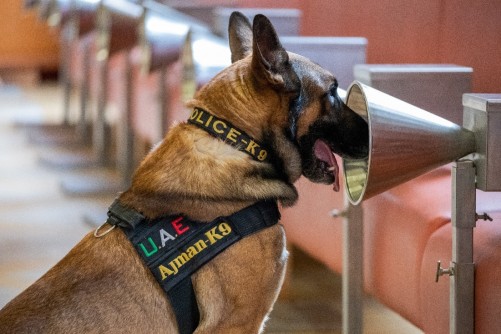Throughout the COVID-19 pandemic, testing individuals remains a key action. One approach to rapid testing is to consider the olfactory capacities of trained detection dogs.
Grandjean, et al. (2022) conducted a prospective cohort study in two community COVID-19 screening centers. Two nasopharyngeal swabs (NPS), one saliva and one sweat samples were simultaneously collected. The dog handlers (and the dogs…) were blinded with regards to the Covid status. The diagnostic accuracy of non-invasive detection of SARS-CoV-2 infection by canine olfaction was assessed as compared to nasopharyngeal RT-PCR as the reference standard, saliva RT-PCR and nasopharyngeal antigen testing.
The researchers found that 335 ambulatory adults (143 symptomatic and 192 asymptomatic) were included. Overall, 109/335 participants tested positive on nasopharyngeal RT-PCR either in symptomatic (78/143) or in asymptomatic participants (31/192). The overall sensitivity of canine detection was 97% (95% CI, 92 to 99) and even reached 100% (95% CI, 89 to 100) in asymptomatic individuals compared to NPS RT-PCR. The specificity was 91% (95% CI, 72 to 91), reaching 94% (95% CI, 90 to 97) for asymptomatic individuals. The sensitivity of canine detection was higher than that of nasopharyngeal antigen testing (97% CI: 91 to 99 versus 84% CI: 74 to 90, p = 0.006), but the specificity was lower (90% CI: 84 to 95 versus 97% CI: 93 to 99, p = 0.016).
Non-invasive detection of SARS-CoV-2 infection by canine olfaction could be one alternative to NPS RT-PCR when it is necessary to obtain a result very quickly according to the same indications as antigenic tests in the context of mass screening.
Reference: Grandjean D, et al. Diagnostic accuracy of non-invasive detection of SARS-CoV-2 infection by canine olfaction. PLOS One. June 1, 2022. https://doi.org/10.1371/journal.pone.0268382
